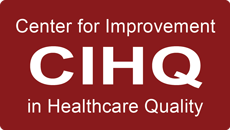

The effective collaboration between the Sterile Processing Department (SPD) and the Operating Room (OR) is crucial for ensuring the smooth functioning and patient safety in any healthcare facility. The SPD is responsible for providing sterile instruments and equipment to the OR, while the OR relies on the SPD for timely and accurate instrument processing. To establish and maintain a strong working relationship between the SPD and the OR, here are some key steps to follow:
- Communication is Key: Open and consistent communication is vital for building strong relationships. Regular meetings should be held between the SPD and the OR staff to discuss concerns, share information, and address any issues or challenges. This can help foster mutual understanding and collaboration.
- Establish Standard Operating Procedures: Clearly defined standard operating procedures (SOPs) should be in place for both the SPD and the OR. These SOPs should outline the responsibilities and protocols for instrument cleaning, sterilization, storage, and distribution. By having standardized processes, both departments can work together seamlessly and minimize errors.
- Cross-Training and Education: Encourage cross-training and education between the SPD and the OR staff. This can help create a better understanding of each other's roles and responsibilities. SPD staff can benefit from observing surgeries and understanding the specific instrument needs of the OR, while OR staff can learn about the complexities of instrument processing and the importance of proper handling.
- Foster a Culture of Respect and Collaboration: Encourage a culture of respect and collaboration between the SPD and the OR. Both departments play integral roles in patient care and recognizing the value of each other's contributions is essential. Encourage feedback, suggestions, and ideas from both sides to improve processes and enhance patient safety.
- Regular Quality Control and Audits: Implement regular quality control measures and audits to ensure compliance with established protocols and standards. This can help identify any areas for improvement and address any issues promptly. Collaborating on quality improvement initiatives can lead to enhanced efficiency and patient outcomes.
- Utilize Technology and Automation: Embrace technology and automation to streamline processes and improve efficiency. Implementing barcode scanning systems, instrument tracking software, and automated sterilization equipment can help reduce errors, increase traceability, and enhance communication between the SPD and the OR.
- Foster a Supportive Environment: Establish a supportive environment where staff feel valued and supported. Encourage teamwork, provide opportunities for professional development, and recognize individual and team achievements. A positive work environment can foster better relationships and improve overall performance.
In conclusion, creating strong working relationships between the SPD and the OR is essential for the smooth functioning and patient safety in any healthcare facility. By following these steps and emphasizing open communication, standardized processes, education, and collaboration, healthcare organizations can enhance the partnership between the SPD and the OR, leading to improved patient outcomes and operational efficiency.
References
- Centers for Medicare and Medicaid Services (CMS):
- Title: Medicare Conditions of Participation for Hospitals: Patient Rights (42 CFR §482.13)
- Link: [https://www.ecfr.gov/cgi-bin/text-idx?SID=47e409a3e6a9e4c79eac2d03c0d3a68d&mc=true&node=pt42.5.482&rgn=div5#se42.5.482_113](https://www.ecfr.gov/cgi-bin/text-idx?SID=47e409a3e6a9e4c79eac2d03c0d3a68d&mc=true&node=pt42.5.482&rgn=div5#se42.5.482_113)
- This regulation outlines the patient's right to receive considerate and respectful care, as well as the importance of effective communication and building trusting relationships between patients and healthcare providers. - Center for Improvement in Healthcare Quality (CIHQ):
- Standard: IC – 7 Disinfection & Sterilization Practices & IC – 8 Infection Prevention & Control Education
- Link: [https://cihq.org/acc-default-hospitals.asp]
- CIHQ sets standards for hospitals, including requirements for appropriate disinfection and sterilization, as well as assuring that organizational staff and patients are educated on appropriate infection control and prevention strategies. - The Joint Commission:
- Standard: Provision of Care, Treatment, and Services (PC)
- Link: Something Special in the Works | The Joint Commission
- The Joint Commission sets standards for healthcare organizations, including requirements for effective communication, collaboration, and building relationships with patients, families, and other healthcare professionals. - Health Insurance Portability and Accountability Act (HIPAA):
- Title: Privacy Rule (45 CFR §164.520)
- Link: https://www.hhs.gov/hipaa/for-professionals/index.html
- HIPAA's Privacy Rule governs the use and disclosure of protected health information (PHI) and emphasizes the importance of maintaining patient privacy and confidentiality, which contributes to building trust in healthcare relationships. - National Standards for Culturally and Linguistically Appropriate Services (CLAS):
- Title: CLAS Standards
- Link: https://thinkculturalhealth.hhs.gov/clas/standards
- The CLAS Standards, developed by the Office of Minority Health, provide guidelines for healthcare organizations to deliver culturally and linguistically appropriate services, promoting effective communication and relationship-building with diverse patient populations. - Agency for Healthcare Research and Quality (AHRQ):
- Title: Communication and Optimal Resolution (CANDOR) Toolkit
- Link: https://www.ahrq.gov/patient-safety/settings/hospital/candor/modules.html
- AHRQ's CANDOR Toolkit provides resources and strategies for healthcare organizations to improve communication, transparency, and relationship-building when adverse events or medical errors occur.
Contact: Lawayne Perkins COO: Lawayne.Perkins@dr-SPD.com
Dr. Antoine Crowder CEO: Antoine.Crowder@dr-SPD.com
Dr.SPD.com
Dr. Antoine Crowder CEO: Antoine.Crowder@dr-SPD.com
Dr.SPD.com
